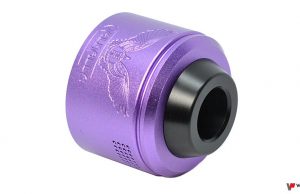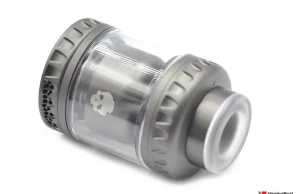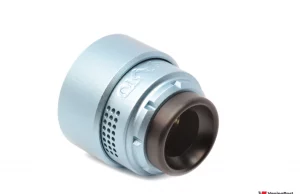Among other things, vaping is about fashion or more precisely, what’s popular at any one time. Indirect vaping was all the rage for a while, then moderate direct vaping arrived, followed by increasingly higher powers that have now brought us back to a more reasonable average. Vapers have a wealth of direct vaping devices to choose from as a result.
Direct inhalation or DL
Direct inhalation, or DL meaning “direct to lung”, involves inhaling the vapour directly into your lungs, the way you do when you breathe. It differs from indirect inhalation, or MTL, which involves inhaling the vapour in two stages, first into your mouth and then into your lungs like you do when you smoke a combustible cigarette. This newer direct inhalation method had attracted a lot of vapers thanks to ever more efficient atomizers.
- Direct inhalation
- Single- or dual-coil?
- Mesh assemblies
- What is the standard format?
- Adapting the rest of your kit
While atomizers designed for indirect inhalation are fairly similar overall in their range of use, roughly from 8 to 20W, the range with direct vaping devices is far wider. There’s no comparison between a restrictive 25 W direct inhalation vaping device and one at 150 W with a free air flow. You should choose a direct inhalation atomizer based on your personal preferences and you planned vaping method. Some atomizers offer easy versatility, while others are more limited in their range of use.
Atomizers for direct inhalation can be grouped into two main categories: single- and dual-coil, and some models can even do both. Single-coil vapes, i.e. those designed to hold a single-coil assembly, work better at vape powers from 20 to 100 W. They have the advantage of being easier to assemble. Atomizers designed for dual-coils can hold assemblies with two coils, which are usually mounted in parallel. They are normally used at 50 to 200 W. Assembly is a bit harder since both coils have to heat up in the same way and at the same rate. That’s not too complicated in itself, but making two coils that heat up equally is a little trickier. Some atomizers can take assemblies with three or four coils, but they are only suitable for the highest vape powers and are still fairly marginal.
Other assembly types have come onto the market for direct vaping atomizers, notably the mesh assembly. The mesh is a thin metal grid, usually made of stainless steel. The name comes from the sheets of metallic fabric used for wicks in genesis atomizers, which enthusiasts used to struggle to fit them onto a few years ago. Mesh coils are commonly used in clearomizers, where they give amazing performance. They haven’t been as successful with reconstructables, probably because they don’t offer the same flexibility or as wide a range of options as conventional coils. They also often tend to use huge quantities of liquid. All of these limitations have hampered their success in reconstructables.
The standard diameter a few years ago was 22mm, and almost all atomizers were that size. Now 24mm has become the most popular diameter. Now it’s mainly MTL atomizers that are 22 mm, as these come in both formats. For direct vaping, 24mm is used most often, followed by 25mm, which is also common. There are other formats too, and depending on the model can range from 26 to 40 mm. Make sure they can fit into your box to avoid turning your device into an unwieldy assembly with an oversized atomizer. Although it doesn’t matter so much when you’re using a box, it’s often criticised by tube enthusiasts.
You need to consider two key factors to make sure your atomizer is suitable for direct vaping. The first concerns the box, which must be able to deliver the power you want to use but still offer reasonable battery life. Single batteries can go up to 80W in 18650 and 100W in 21700 sizes. Beyond that, you’ll need to switch to a double battery. Having two batteries always doubles the battery life, which makes life easier but makes your device a lot bigger. The second factor is to do with liquids. Standard 10ml vials may still be fine with moderate use at reasonable power. But at higher powers or for intensive use, the larger bottles usually used with a booster mean you can keep the cost of your liquid within a reasonable range. You may want to think about DIY if you use a lot of liquid.






